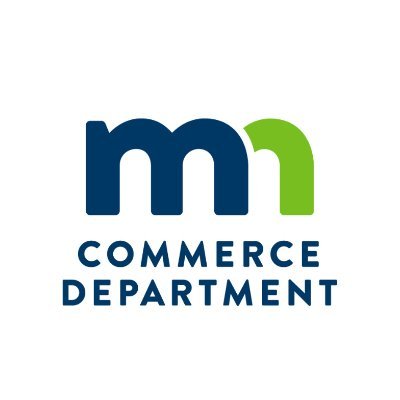Minnesota
Overview
One of the country’s oldest community solar markets, Minnesota had nearly 1 GW installed by 2023 when the legislature created a new program focused on equity
Latest Minnesota Policy Updates
August 2025
Subscribers across many existing community solar projects in Minnesota are no longer going to get the full value of savings they signed up for. In early August, the Minnesota Court of Appeals confirmed a 2024 decision from the PUC that all subscribers currently receiving the applicable retail rate (ARR) will now receive the less valuable value of solar (VOS) rate. We’re generally looking at a 20-30% cut to the savings these customers signed up for and have been receiving to date. These projects and subscribers rightfully expected 25 years-worth of ARR credits when they energized. Industry and ratepayer advocates are exploring the best path forward to challenge the decision so perhaps there will be better news to share later this year.
June 2025
Our thoughts are with the families of House Speaker Melissa Hortman and Senator John Hoffman after the tragic attack in June. Speaker Hortman was a consistent advocate for community solar and by all accounts a wonderful force in Minnesota politics. Senseless violence has no place in this country and members of the clean energy industry will honor her legacy by continuing to fight for the issues that she kept front and center. The legislature did end up passing its energy omnibus bill in June, but only after removing the provision that would have ended the inclusive community solar program in 2028.
May 2025
In Minnesota, we’re still watching an energy omnibus bill that could end the inclusive community solar program in 2028. Just before the session ended on May 19, members from both chambers were assigned to a conference committee to align on legislative language, which we’re expecting to move forward during a special session in June. While the dates for that are still unknown at the time of writing, we do know that budget bills like this energy package have to pass by June 30 in order to avoid a government shutdown. The current bill would prevent up to 500 MW of community solar that could otherwise be added to Minnesota’s grid by 2035.
April 2025
The Department of Commerce launched the second year of its community solar program with another 100 MW in February, but all eyes are on the legislature as an omnibus bill (SF 2393) that would terminate the program in 2028 is moving through the senate. If the bill is signed into law, a potential 500 MW of community solar expected to come online by 2035 would disappear. It should be more difficult for the bill to pass the house but with such high stakes, community solar organizations and local advocates are working hard to oppose the package.
February 2025
The Department of Commerce made 100 MW available in 2024 to kick off its new community solar program and all of that capacity has now been taken up; more than 10 projects are online. February 12, 2025 marked the beginning of another 100 MW through the end of the year. This time, Commerce will review applications in monthly batches and the application portal will remain open, rather than closing between batches like it did last year. The project scoring system has also been modified to award 2 points for every 2.5% increase in the discount for LMI subscribers.
January 2025
The news out of Minnesota is that Xcel has launched a consolidated billing service to new projects in the Low- and Moderate-Income Accessible CSG Program, though it’s far from a perfect offering. Unlike what we’ve seen in any other market, Xcel will be charging subscribers a sales tax on the subscription fee and each subscriber will have to manually opt in to the single-bill system on their disclosure form. Xcel also currently has no plans to offer consolidated billing to legacy projects.
Program History
Administrators


CS Incentives
Community solar credit rate
- Solar Rewards Community
- Applicable retail rate (ARR): dependent on the rate class under which the subscriber receives service and updated annually – provided to projects until 2017 and ended by a PUC decision in 2024 that was affirmed by the MN Court of Appeals in 2025
- Value of solar (VOS): dependent on the value that 1 MW of capacity would bring to the grid and set annually, where a project’s initial VOS rate is based on when it is deemed complete and escalates throughout the life of the project – provided to projects beginning in 2017
- 2019 – 2022: projects completed in this window could receive an additional 1.5c/kWh (for the life of the project) for residential subscriptions
- LMI-Accessible CSG
- Average retail rate (ARR): dependent on the subscriber type and calculated for each segment based on a percentage of the annually updated average retail rates:
- Income-qualified: 100% of the average residential retail rate
- Residential mass market: 85% of the average residential rate
- Master-metered affordable housing: 80% of the average residential rate
- Public interest small commercial: 75% of the average retail rate for the rate class
- Public interest large commercial: 100% of the average retail rate for the rate class
- Other commercial: 70% of the average retail rate for the rate class
- Average retail rate (ARR): dependent on the subscriber type and calculated for each segment based on a percentage of the annually updated average retail rates:
Utilities
Subscribers
Anchor subscribers
- Maximum 40% of capacity to one subscriber (for both programs)
Solar Rewards Community
- Subscribers must be located in the county where the project is located or an adjacent county
LMI-Accessible CSG
- Minimum 30% of project capacity to income-eligible households
- Additional 25% of project capacity to income-eligible households, affordable housing providers, and/or public interest subscribers such as schools, faith communities, and non-profits
- Optional backup subscriber, which temporarily receives a subscription if an active subscriber leaves the project
- Each project must have at least 25 individual subscribers per MW
Income-qualified subscriber eligibility options
- Categorical eligibility (proof of participation in an approved program)
- Proof of income
Billing
Billing type
- Consolidated billing became available to subscribers in the LMI-Accessible CSG program in 2025
- Xcel does not offer consolidated billing for the SRC program
Credit banking
- Unsubscribed energy is purchased by the utility every month at the avoided cost rate
- Subscribers can bank excess bill credits and, if they do not get applied to subsequent bills, remaining credits are purchased by the utility annually in the spring
Get PDF by email
Share your feedback
Contact our policy team
Don’t Miss Critical Market Updates
Get the latest policy news, articles, and resources, sent straight to your inbox every month.
On this page
Policy hub map
Select a state


